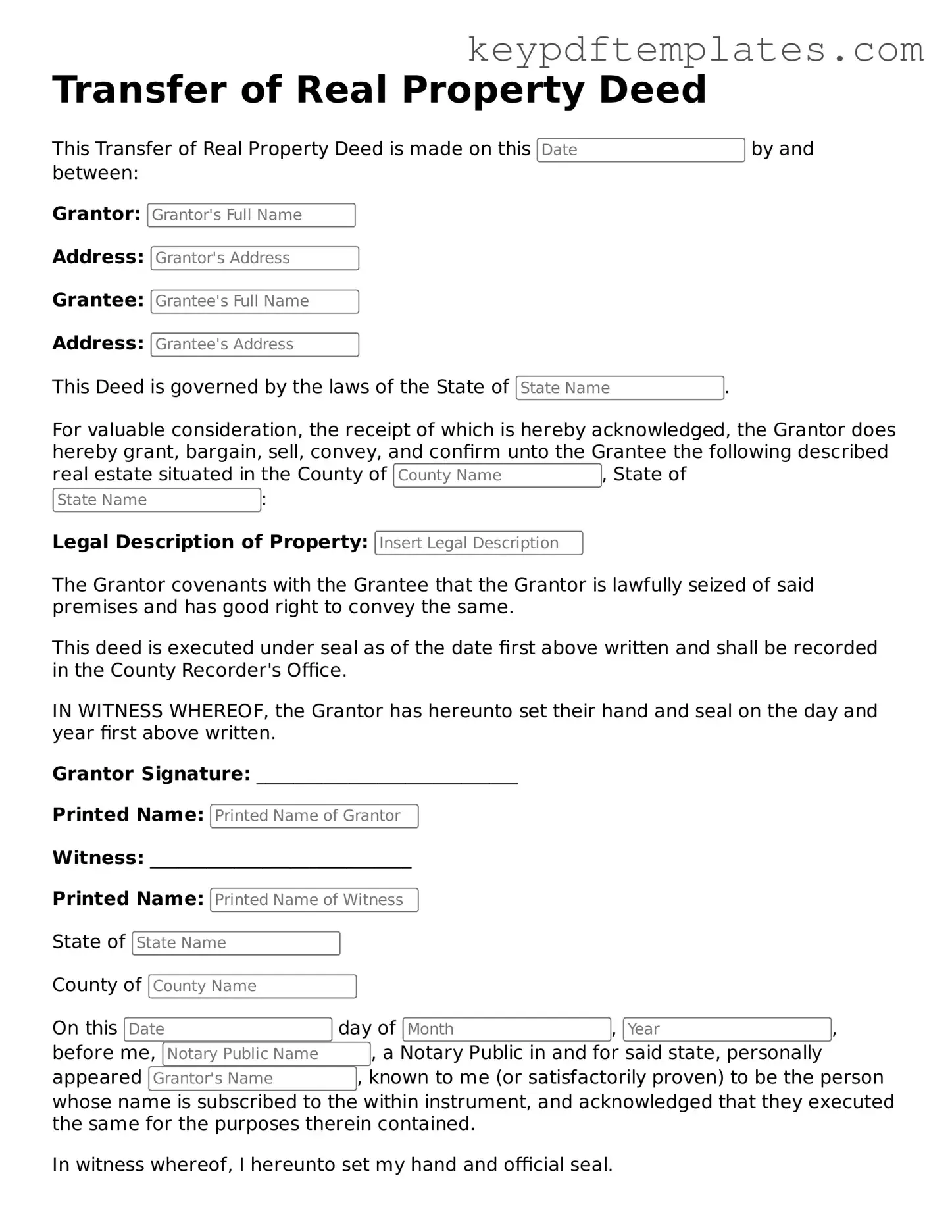Printable Deed Template
A Deed form is a legal document that signifies an agreement or transfer of property rights. It serves as a formal record of transactions, ensuring that the intentions of the parties involved are clearly stated and legally binding. Understanding how to properly use a Deed form is essential for anyone involved in real estate or property transfers.
Modify Document Online
